SUMMARY
This is AI generated summarization, which may have errors. For context, always refer to the full article.
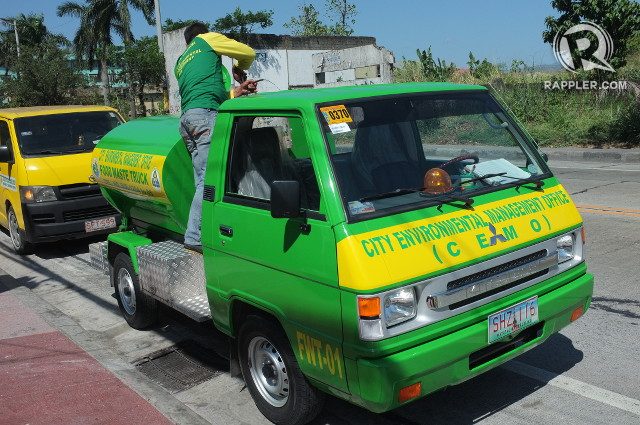
MARIKINA, Philippines – Lunchtime in Gotohan ng Bayan in the heart of Marikina City is a festival of smells and sounds.
The bar seats in the carinderia are fully occupied by hungry customers scarfing down tennis-ball-sized kwek kwek, chunks of lechon kawali swimming in sauce or piles of onion-ring-topped pancit canton.
The small eatery is surrounded by the ordered chaos of a public market: vendors pushing wooden carts of cabbage, fish glimmering under tiny fans to keep out flies, knives slicing through slabs of meat.
What happens to this bounty of food when the customers head back to work or home after lunch?
For the past few months at least, customers’ leftovers have not gone to waste. Instead, Gotohan ng Bayan owner Maria Victoria gives them to the Marikina City government.
After lunch, without fail, the city’s food waste truck arrives in front of the gotohan. Maria has all her leftovers ready, packed in metal canisters for Alex Valencia, food waste truck assistant, to carry to the truck and out of Victoria’s hands.
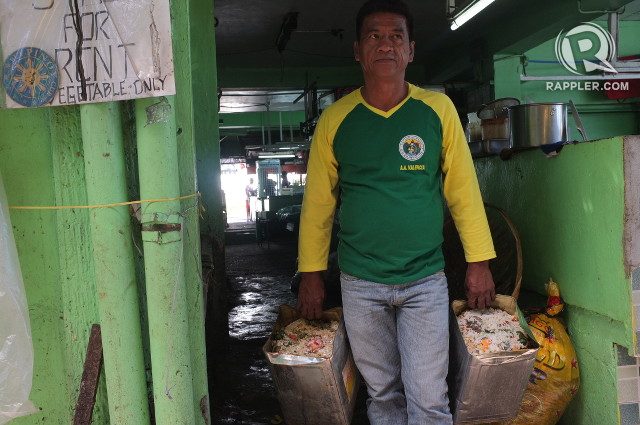
“Mabuti na ‘yon kasi hindi na ako mapapanisan, hindi aamoy, hindi ako lalangawin,” 56-year-old Victoria tells Rappler. (It’s good because now the food doesn’t spoil, it doesn’t stink, and I don’t get flies)
Valencia pours all the leftovers – mostly rice, bits of vegetables and meat fat – inside the specialized food waste container on the back of the truck. Then he returns the metal canisters to Victoria to use for the next day.
He boards the truck beside his partner, truck driver Jonald Jaralve, and it’s off to the next restaurant.
Trash to ‘treasure’
Marikina’s food waste truck program began 3 months ago in November 2014. They began courting food establishments in the city after discovering that restaurants, markets and groceries are a major generator of kitchen waste, said City Environmental Management Office (CEMO) chief Gloria Buenaventura.
“First, we sent them a letter asking if they are willing to participate in a pilot project. We selected big restaurants, and then we identified the small carinderias beside them so the truck’s trip is not wasted. That’s why we collect mostly in major thoroughfares,” she told Rappler.
Today, they collect food waste from 95 food establishments – not even 10% of the 1,500 food establishments in the city. But it’s a small step that has already made a big impact.
For one thing, the restaurant owners are happy.
“The fast-food chains are starting to realize that they can save on garbage. Now they come to us whereas before they pay private haulers,” says Buenaventura.
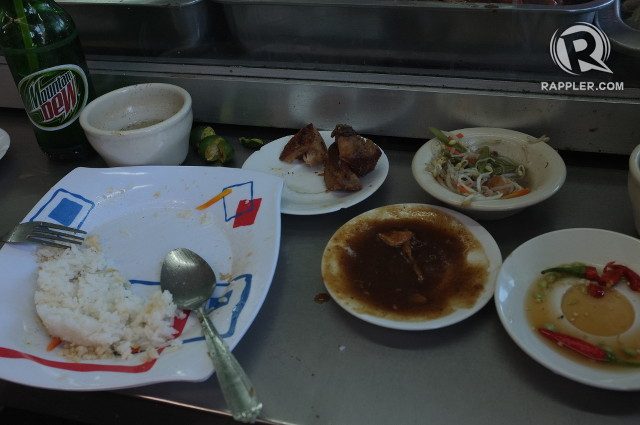
Its establishments like seafood restaurants that are especially pleased.
“Shrimp shells, shells of crabs easily become smelly. What they do usually is bring them to a transfer station when there is no collection, but now we guarantee to them that we will pick them up every afternoon,” adds Buenaventura.
The fledgling program makes use of just two food waste trucks which collect waste from 40 to 45 food establishments everyday. They leave the CEMO compound at 1 pm and return by around 7 pm.
These trucks are not your regular garbage trucks. They are specialized for collecting food waste with a stainless steel interior to prevent rusting and a sealed container to prevent odor from escaping. Each truck cost the city P2 million ($45,000).
The waste is then poured batch by batch into a one-ton-capacity bioreactor. CEMO employees add animal manure from a nearby horse ranch, saw dust and a special bacteria. The bioreactor churns the mixture for 3 to 6 hours then out comes compost used as fertilizer for plants.
The program has been collecting an average of 8 tons of food waste a month – waste that would have otherwise been collected by regular dump trucks that bring the city’s garbage to a sanitary landfill all the way in Montalban.
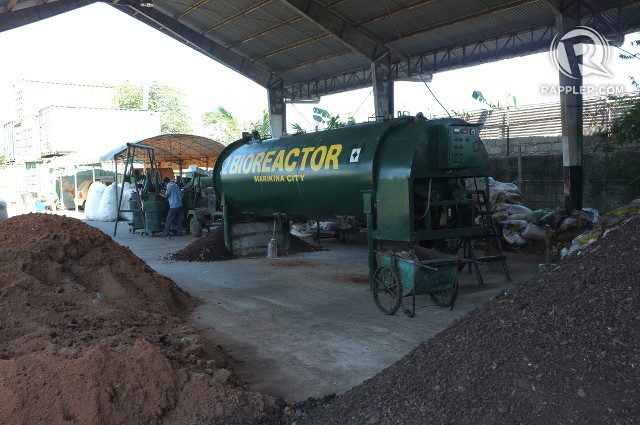
This translates to savings for the city. Buenaventura says the pilot program has been saving Marikina P5,000 ($113) per dump truck trip because the trucks no longer have to bring as much trash to the landfill. This means less expenses on gas and driver fees.
The city’s dump trucks make 45 trips to the landfill daily, translating to savings of P225,000 ($5,080).
Matter of survival
Aside from savings, the food waste program makes some money on the side.
The compost made from the food waste is sold to individuals at P15 per kilo. So far, it has been earning the city P3,000 to P6,000 ($68 to $135) a month, said CEMO Acting Assistant of the Department Head Oliver Villamena.
The city also gives sacks of compost for free to public schools, the city park development office and communities which implement urban gardening programs.
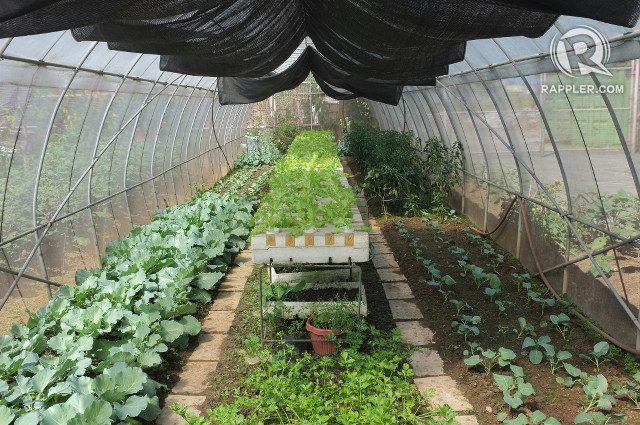
But more than savings and earnings, Villamena said the program enables the city to follow the law.
The Ecological Solid Waste Management Act orders all local governments to divert at least 30% of their garbage from the landfill. Diversion means a certain percentage of the garbage must not be thrown in landfills. Instead, they can be recycled, recovered, reused or turned into compost.
“The law also says we should increase our waste diversion rate by 3% every year. The food waste program helps us achieve this,” says Villamena.
Marikina generates around 350 tons of garbage a day. Of this, around 21% is food waste.
If Marikina was able to cover all food establishments and households in its food waste program, it could reduce its garbage expenses by as much as a quarter. That amount is no laughing matter. In 2013, Marikina spent P43.5 million on garbage, according to the Commission on Audit.
The challenge, said Villamena, is scaling up. To keep up with the city’s robust generation of food waste, the city would have to buy around 70 more bioreactors. For now, the city is taking baby steps by targeting the food establishments.
Marikina is one of the few LGUs in the country that follows the Solid Waste Management Act. According to the government, only 25% out of 1,610 LGUs nationwide are compliant.
Abiding by the law is not just a job requirement for Marikina, but a matter of survival, said Villamena.
It was the tons of garbage clogging the city’s drainage that exacerbated flooding during Tropical Storm Ondoy in 2009.
“Solid waste management is a big deal in flood management. So in Marikina, we prevent that part of the problem.” – Rappler.com
Add a comment
How does this make you feel?
There are no comments yet. Add your comment to start the conversation.